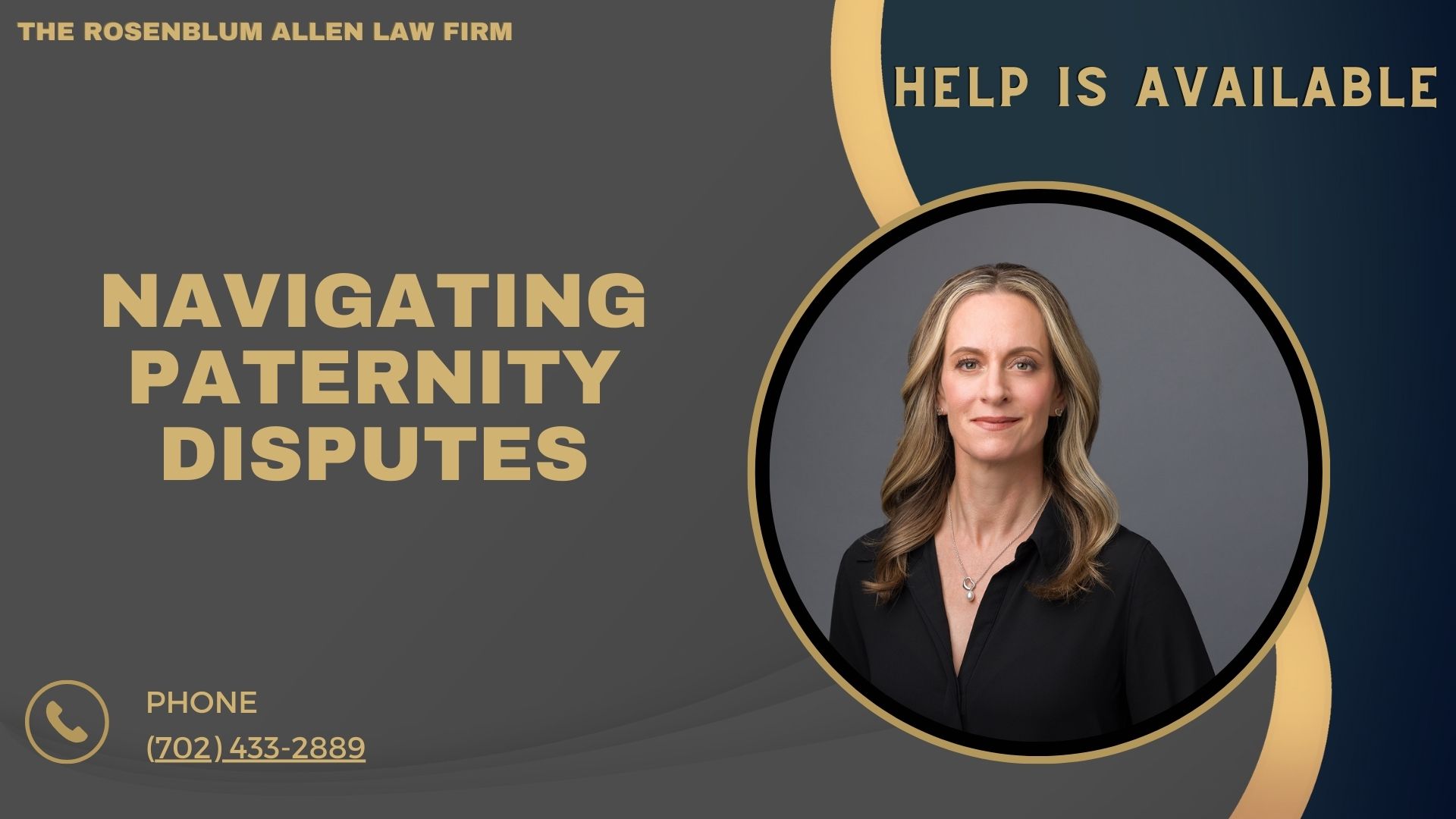Navigating paternity disputes can be complex and emotionally challenging. Understanding the legal framework, parental rights, and resolution options is crucial.

Understanding Paternity Disputes
Paternity disputes arise when there’s uncertainty or disagreement about a child’s father. These reasons are common. They include infidelity and lack of clear paternity. There are also legal issues. These include child support or custody.
Legal Framework
In the United States, laws govern paternity determination, outlining parents’ rights and responsibilities. You can establish paternity voluntarily or through legal action. Each option has its implications.
Initiating Resolution
When faced with a paternity dispute, taking proactive steps is essential.
Seek legal counsel.
The first step is to consult with a knowledgeable family law attorney. They can guide you through the legal process. They can explain your rights and options.
Gather Evidence
Collecting relevant evidence helps your case. It also resolves disputes. This evidence includes DNA tests, records, and witness statements.
Communicate
Talking openly and well with the other party can lead to a resolution. You can avoid going to court. Mediation or negotiation can be effective methods for reaching agreements amicably.
Knowing the law helps. Taking steps to fix the issue and communicating well also help. By doing these things, you can dispute paternity better.

Legal Procedures
Paternity Testing
Paternity testing is critical. It resolves disputes and provides scientific evidence of relationships. Standard methods include DNA tests, which are highly accurate and reliable. Here are essential points about paternity testing.
Types of Tests: DNA tests are the most common and reliable method. Buccal swabs are painless and non-invasive.
Accuracy: Modern DNA testing boasts accuracy rates of over 99%.
Reliability: Results are allowed in court and carry significant weight in legal proceedings.
Court Proceedings
Legal action may be necessary when disputes cannot be resolved outside of court. Understanding the court process is vital.
Filing a Paternity Suit: Initiating legal proceedings by filing a paternity suit with the appropriate court.
Legal Representation: Securing legal representation is crucial for navigating court proceedings effectively.
Trial Process: Court hearings involve presenting evidence, witness testimony, and arguments before a judge or jury.
Parental Rights and Responsibilities
Clarifying parental rights and responsibilities is essential for biological and alleged fathers.
Rights and Responsibilities of Biological Fathers
Biological fathers have legal rights and responsibilities, including:
Custody and Visitation: The right to seek custody or visitation with the child.
Financial Obligations: Responsibility for child support payments to ensure the child’s well-being.
Decision-Making Authority: Input essential decisions about the child’s upbringing and well-being.
Rights and Responsibilities of Alleged Fathers
Alleged fathers, before paternity is established, have certain rights and obligations.
Legal Obligations: While paternity is disputed, alleged fathers may still have legal obligations to the child.
Implications of Established Paternity: Once paternity is established, rights and responsibilities are legally recognized and enforced.
Understanding these rights and duties is crucial. They are key for navigating paternity disputes well. They also protect the interests of all involved.

Child’s Best Interest
In paternity disputes, the welfare of the child takes center stage.
Why the child’s well-being matters
Putting the child first is crucial: their happiness, safety, and future.
Emotional and Physical Health: A nurturing environment ensures the child thrives emotionally and physically.
Consistency and Stability: Providing a stable home life gives the child security and a sense of belonging.
Healthy Relationships: Positive interactions with both parents are vital for the child’s development.
Protection from Harm: Safeguarding the child from abuse or neglect is non-negotiable.
Factors Considered for the Child’s Best Interest
Courts weigh several factors when deciding what is best for the child.
Parental Ability to Provide
Emotional Connection
Child’s Wishes (if mature)
Safe and Supportive Environment
Education and Opportunities
Stability
Custody, visitation, and support decisions aim to serve the child’s needs. They do so by considering these factors. They aim to promote the child’s well-being. It’s all about giving them the best start in life.

Resolving paternity disputes amicably
Resolving paternity disputes without escalating conflict is ideal for all involved parties.
Benefits of Amicable Resolution
Choosing amicable solutions offers many advantages:
Reduced Stress: Minimizing conflict lowers stress levels for everyone, especially the child.
Cost-Effectiveness: Avoiding lengthy legal battles saves time and money.
Preserved Relationships: Maintaining positive relationships between parents fosters a healthier environment for the child.
Control Over Outcome: Collaborative approaches empower parents to shape agreements that suit their unique circumstances.
Strategies for Amicable Resolution
Several approaches can help in an amicable resolution:
Negotiation: Open communication and compromise enable parents to reach mutually acceptable agreements.
Collaborative Law: Engaging in collaborative law processes with legal professionals promotes constructive dialogue and problem-solving.
Co-Parenting Counseling: Seeking guidance from counselors specializing in co-parenting dynamics can help navigate challenges and find common ground.
By focusing on cooperation and communication, parents can resolve paternity disputes. They can do so in a way that preserves relationships and puts the child’s well-being first.

Breaking It All Down
Understanding the law and putting the child first is key. Paternity disputes are complex.
Recap of Key Points
Legal Procedures: Paternity testing and court proceedings are crucial to resolving disputes.
Parental Rights and Responsibilities: Understanding rights and obligations is essential for biological and alleged fathers.
Child’s Best Interest: Prioritizing the child’s welfare guides decision-making processes.
Amicable Resolution: Choosing cooperation over conflict offers many benefits for all parties.
Importance of Seeking Guidance
Handling paternity disputes is tough. But, with the right support, we can find solutions. They will serve everyone’s best interests.
Encouragement to Focus on the Child’s Well-Being
The goal is to resolve paternity disputes. This should create a nurturing environment for the child. In this environment, the child can thrive emotionally, physically, and socially.
Seek legal advice. Keep talking. And, focus on cooperation. Doing these things can lead to results. They promote the child’s happiness and stability. This lays the groundwork for a better future for all.

Frequently Asked Questions
What is a paternity dispute?
A paternity dispute occurs when people are unsure or disagree about a child’s father. Reasons include infidelity, legal implications, and doubts about paternity.
Why is resolving a paternity dispute significant?
Resolving a paternity dispute is crucial. It establishes parental rights, sets child support, and ensures the child’s well-being. It provides clarity and stability for all involved.
How can I start the resolution of a paternity dispute?
Starting resolution involves getting a lawyer. You also gather evidence. And you look into talking with the other party. Legal procedures, such as paternity testing and court proceedings, may also be necessary.
What are the rights and responsibilities of biological fathers?
Biological fathers have rights to custody, visitation, and decision-making about the child’s upbringing. They are responsible for providing financial support through child support payments.
What rights and obligations do alleged fathers have?
Alleged fathers may still have legal duties to the child. They have these duties before paternity is established. Once paternity is confirmed, they gain rights and duties like biological fathers.
How do courts determine the child's best interests in a paternity dispute?
Courts consider the parents’ ability to provide four things. They look at their ability to provide: an emotional bond, a safe place, education, and stability. They consider these things when determining the child’s best interests.
What are the benefits of resolving paternity disputes amicably?
Resolving disputes amicably reduces stress. It saves time and money and preserves relationships. It also empowers parents to shape agreements that fit their unique circumstances.
What strategies can I use to resolve a paternity dispute amicably?
Negotiation, collaborative law, and co-parenting counseling are effective strategies for achieving amicable resolutions. These approaches focus on cooperation and communication between parties.
Why should I focus on the child's best interests in a paternity dispute?
Prioritizing the child’s well-being fosters a nurturing environment. It helps the child to thrive emotionally, physically, and socially. It lays the foundation for a healthier and happier future for the child.

Additional Resources for You
Don’t forget, in addition to the valuable information provided here, our lead attorney, Molly Rosenblum Allen, Esq, has created several resources to assist you in your time of need:
- Las Vegas Custody Attorney: Offering effective legal guidance for child custody matters in Las Vegas.
- Fathers Rights: Ensuring fathers’ rights are protected throughout legal proceedings.
- Supervised Visitation: Providing information and support for supervised visitation arrangements.
- Changing Custody Agreement: Guidance on modifying existing custody agreements to better suit your family’s needs.
- Grandparents Rights Nevada: Exploring grandparents’ legal rights in Nevada regarding visitation and custody.
- Long Distance Co-Parenting: Tips and strategies for co-parenting when living far apart.
- How a Mother Can Lose a Custody Battle: Insights into factors that may affect a mother’s custody rights.
- Custody Battle Tips for Nevadans: Practical advice for navigating custody battles in Nevada courts.
- What Not To Say In Child Custody Mediation: Avoid common pitfalls during custody mediation sessions.
- How Much is a Custody Lawyer: Understanding the cost implications of hiring a custody lawyer.
- Types of Custody in Las Vegas: Explaining different types of custody arrangements available in Las Vegas.
- Nevada Child Custody Laws: Comprehensive guide to child custody laws in Nevada to help you navigate your case effectively.

Outside Resources for You
Here are some offsite resources related to the content that you may find useful:
American Bar Association (ABA): Provides resources and information on family law, including articles, guides, and legal assistance directories.
National Parents Organization: Offers support and resources for parents involved in custody disputes, including educational materials and advocacy initiatives.
Child Welfare Information Gateway: Offers resources on child welfare laws and policies, including information on custody, visitation, and parental rights.
Family Law Section of the State Bar of Nevada: Provides resources and support for individuals navigating family law matters in Nevada, including information on custody, visitation, and legal assistance.
Kids in the Middle: Offers support and resources for children and families going through divorce and custody disputes, including counseling services and educational programs.
National Center for State Courts: Provides information on state-specific court procedures and resources, including guides on family court processes and legal assistance directories.

A Special Message from Our Lead Attorney, Molly Rosenblum Allen, Esq

Thank you for exploring our resources! Your journey through this challenging time matters to us. If you need help or have questions, schedule a free consultation. You can do this by calling (702) 433-2889. We’re here to support you every step of the way.





